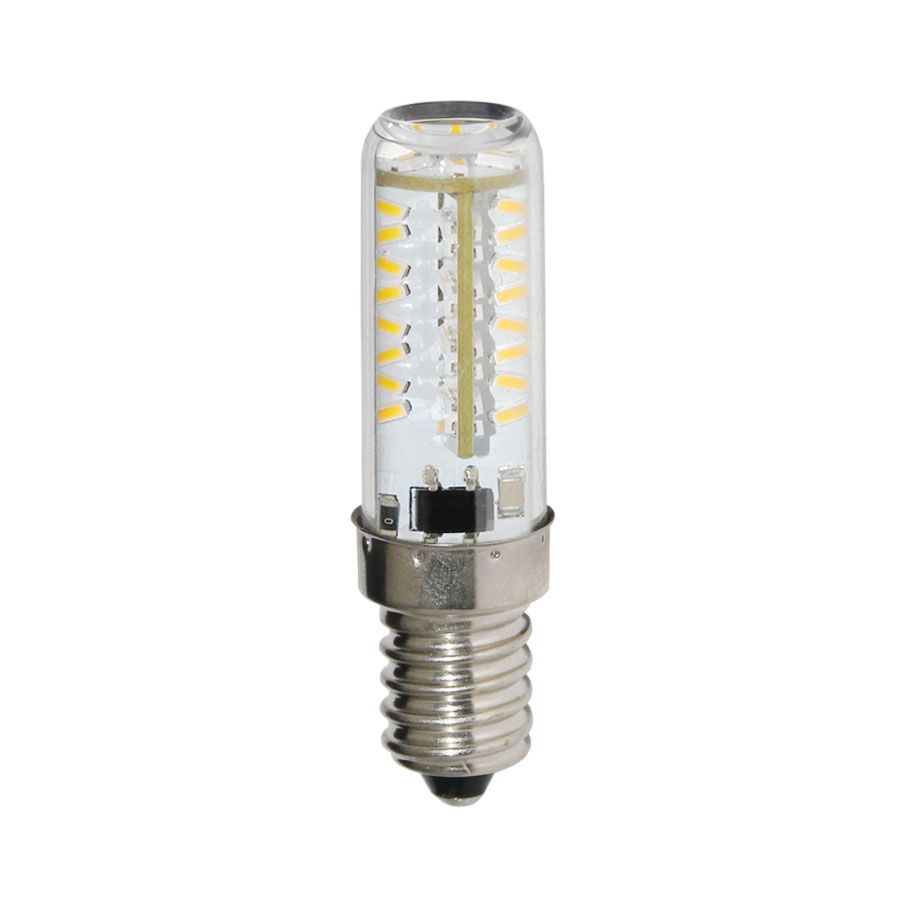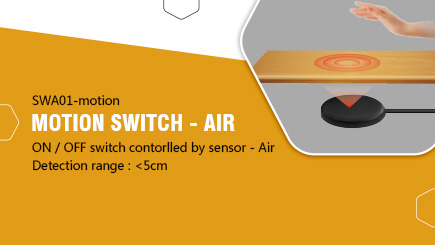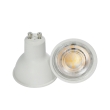What are the causes of the LED dead light?
2017-05-26 14:12:20
Today, we LED die as an example, to analyze the number of reasons:
To failure analysis of large data show that LED dead light may be more than 100 reasons, limited to time, today we only LED light source, for example, from the five major sources of LED light source (chip, bracket, phosphor, solid crystal, And gold line) to start, introduce some of the reasons that may lead to dead lights.
LED bracket
1, silver layer is too thin
The existing LED light source on the market selects copper as the base material for the lead frame. In order to prevent oxidation of copper, the general surface of the bracket must be plated on a layer of silver. If the silver plating layer is too thin, under high temperature conditions, the stent is easy to yellow. The silver layer of the silver layer is not caused by the silver plating layer itself, but by the copper layer under the silver layer. At high temperatures, copper atoms diffuse and penetrate the surface of the silver layer, making the silver layer yellow. The oxidation of copper is the biggest drawback of copper itself. When the copper once the oxidation state, thermal conductivity and heat dissipation performance will be greatly reduced. So the thickness of the silver layer is essential. At the same time, copper and silver are susceptible to a variety of volatile sulfides and halides in the air and other pollutants corrosion, so that the surface dark color. Studies have shown that discoloration to increase the surface resistance of about 20 to 80%, power loss increases, so that the LED stability, reliability greatly reduced, and even lead to serious accidents.
2, silver plating layer oxidation
The discovery of sulfur / chlorine / bromine is harder and harder to find in the initial diagnosis of contact with LED black. However, there are obvious signs of blackness in the silver screen of the LED light source, which may be related to the oxidation of silver. But the EDS spectrum analysis and other pure element analysis and detection methods are not easy to determine oxidation, because exists in the air environment, sample surface adsorption and encapsulation of organic matter such as oxygen elements will interfere with the determination of the test results, so the conclusion of the decision to use oxidative black SEM, EDS, micro-infrared spectroscopy, XPS and other professional testing and optical, electrical, chemical, environmental aging and a series of reliability comparison experiments, combined with professional knowledge and electroplating knowledge of a comprehensive analysis.
3, poor quality plating
The quality of the coating depends on the quality of the metal deposition layer of the crystal structure, in general, the smaller the crystal structure, the coating is also more dense, smooth, protective performance is also higher. This fine crystal coating is called a "microcrystalline layer". Jin Jian pointed out that a good coating should be fine crystal coating, smooth, uniform, continuous, do not allow contaminants, chemical residues, spots, black spots, charred, rough, pinhole, pitting, crack, Blistering, skin wrinkling, coating peeling, yellow, crystalline coating, local no plating and other defects.
In the practice of electroplating, the thickness of the metal coating and the uniformity and integrity of the coating are one of the important indexes to check the quality of the coating because the protective properties and porosity of the coating are directly related to the thickness of the coating. The special change is the cathodic coating, with the thickness increases, the protective performance of the coating also increases. If the thickness of the coating is not uniform, often the thinnest place is first destroyed, the rest of the coating and then thick will lose the protective effect.
Coating porosity more oxygen and other corrosive gases through the pores into the corrosion of copper matrix.
4, silver layer vulcanization
LED light source is afraid of sulfur, this is because the sulfur-containing gas through its porous structure of the silica gel or scaffold gap, with the light source silver layer vulcanization reaction. LED light source after the vulcanization reaction, the product function area will be black, the luminous flux will gradually decline, the color temperature appears drift; vulcanized silver sulfide with the temperature increase in conductivity, in the course of the phenomenon, prone to leakage; The situation is that the silver layer is completely corroded and the copper layer is exposed. As the gold wire two solder joints attached to the silver layer surface, when the stent function area silver layer is completely vulcanized corrosion, the golden ball fall off, resulting in dead lights.
5, organic pollution
Jin Kam also pointed out that because the electroplating process will use a variety of organic matter containing syrup, silver-plated layer if the cleaning is not clean or the use of poor quality and deterioration of the syrup, the residual organic matter once in the light source in the environment, Light, heat and electricity under the action of organic matter may occur redox and other chemical reactions lead to silver-plated layer surface discoloration.
6, outlet material
Plastic material is the key to LED package brackets, gold inspection found that if the PPA stent is the nozzle material, will reduce the plastic properties of PPA, resulting in the following problems: high temperature tolerance is poor, easy to deformation, yellowing, low reflectivity ; High water absorption, the stent will be due to changes in size caused by water and mechanical strength decreased; and metal and silica gel poor adhesion, compared to glue, and a lot of silicone does not match. These potential problems make the lamp beads difficult to use in the slightly larger power, once beyond the use of power range, the initial brightness is high, but the attenuation is very fast, useless a few months on the dark.
chip
7, chip anti-static ability is poor
LED chip beads of anti-static indicators depends on the LED light-emitting chip itself, and packaging materials are expected to package technology has nothing to do, or the impact of factors is very small, very subtle; LED lights are more susceptible to electrostatic damage, which is the distance between the two pins Relationship, LED chip die spacing of the two electrodes is very small, usually within a hundred microns, and the LED pin is about two millimeters, when the electrostatic charge to transfer, the greater the spacing, the more likely to form a large potential difference , That is, high voltage. Therefore, the closure of LED lights are often more prone to electrostatic damage accident.
8, chip epitaxial defects
LED epitaxial wafers in the high temperature process, the substrate, MOCVD reaction chamber residual sediment, peripheral gas and Mo source will introduce impurities, these impurities will penetrate the epitaxial layer, to prevent gallium nitride crystal nucleation, the formation of various A variety of epitaxial defects, and ultimately in the epitaxial layer surface formation of small holes, which will seriously affect the epitaxial wafer film material quality and performance.
9, chip chemical residues
Electrode processing is the key process for making LED chips, including cleaning, evaporation, yellowing, chemical etching, fusion, grinding, will come into contact with a lot of chemical cleaning agent, if the chip is not clean enough, will make harmful chemical residues. These harmful chemicals will be in the LED power, and electrochemical reaction with the electrode, resulting in dead lights, light failure, dark, black and so on. Therefore, the identification of chip chemical residues on the LED packaging plant is essential.
10, the chip is damaged
LED chip damage will lead directly to LED failure, so improve the reliability of LED chips is essential. During the evaporation process, it is sometimes necessary to fix the chip with a spring clip, thus creating a clip. Huangguang operation if the development is not complete and the mask has a hole will make the light area has more residual metal. Grain in the previous process, the process such as cleaning, evaporation, yellow, chemical etching, fusion, grinding and other operations must use tweezers and flower baskets, vehicles, etc., so there will be grain electrode scraping situation.
Chip electrode on the solder joint: chip electrode itself is not solid, resulting in solder wire after the electrode off or damage; chip electrode itself poor solderability, will lead to solder ball soldering; chip storage will lead to improper electrode surface oxidation, surface contamination And so on, the slight contamination of the bonding surface may affect the diffusion of metal atoms between the two, resulting in failure or Weld.
11, the new structure of the chip and the source material is not compatible
The new structure of the LED chip electrode with a layer of aluminum, the role of the electrode in the formation of a layer of mirrors to improve the efficiency of the chip, followed by a certain extent, reduce the amount of gold used in the deposition electrode to reduce costs. But aluminum is a relatively lively metal, once the packaging plant lax control, the use of chlorine exceeded the standard glue, gold electrode in the aluminum reflective layer will react with the chlorine in the glue, resulting in corrosion.
Phosphor

12, the phosphor hydrolysis
Nitride phosphor is easy to hydrolyze and fail.
13, the mechanism of phosphor self-heating
The mechanism of phosphor self-heating, making the phosphor layer temperature is often higher than the LED chip p-n junction. The reason for this is that the conversion efficiency of the phosphor can not reach 100%, so that part of the blue light absorbed by the phosphor is converted into yellow light, and the other part of the light energy absorbed by the phosphor in the high light energy density LED package becomes heat. Since the phosphor is usually mixed with silica gel and the thermal conductivity of the silica gel is very low, only 0.16 W / mK, so the heat generated by the phosphor will accumulate in the smaller local area, resulting in local high temperature, LED optical density The greater the heat, the greater the calorific value of the phosphor. When the temperature of the phosphor reaches 450 ° C or more, the silica gel near the phosphor particles will be carbonized. Once there is a place where the silica gel carbon black, its light conversion efficiency is lower, the region will absorb more LED light emitted and convert more heat, the temperature continues to increase, making the area of carbonization is growing.
Solid crystal
14, silver peeling off
Conductive silver plastic matrix is epoxy resin materials, thermal expansion coefficient than the chip and the bracket are much larger in the lamp beads of hot and cold impact of the use of the environment, because of heat problems stress, the temperature changes in the environment will be more intense To intensify, the colloid itself has tensile breaking strength and ductility, and when the tension is over, then the colloid is cracked. Solid crystal glue at the interface of the peel, the heat drastically worse, the chip can not be derived from the heat, the junction temperature increased rapidly, greatly accelerated the process of light failure.
15, silver plastic layer
Silver powder particles dispersed in the suspension system in the slurry system, silver powder and the matrix due to the density difference, charge, cohesion, the force and the structure of the dispersion and many other factors, often appear silver deposition stratification phenomenon, if the sedimentation Fast will make the product in the hanging pulp when the sagging, coating thickness is not uniform, and even affect the physical and chemical properties of the coating, stratification will also affect the device heat, bonding strength and conductivity.
16, silver ion migration
A customer with silicone packaging, conductive silver glue bonded vertical flip light source leakage phenomenon, commissioned Jin Jian find the cause. According to the analysis of the bad lamp beads, abnormal silver elements were detected on the side of the chip, and it was observed that the silver particles gradually spread from the bottom positive silver colloidal area to the dendritic extension morphology to the vicinity of the P-N junction side of the upper part of the chip. It is very likely that the silver ions from the solid crystal silver glue are caused by ion transport on the side of the chip. The phenomenon of silver ion migration is gradually formed in the process of product use. With the increase of migration phenomenon, the final silver ion will turn on the chip P-N junction, resulting in the existence of low resistance path on the chip side, resulting in abnormal leakage current Even in the case of short circuit caused by the chip. The reason for the migration of silver is multifaceted, but the main reason is that the silver-based material is damp, and after the silver paste is damped, the intruding water molecules make the silver ionized and migrate along the chip side in the vertical direction. Therefore, the proposed inspection of customers with caution silicone packaging, silver glue bonded vertical flip chip beads, the use of gold and tin eutectic welding method will be fixed on the bracket in the chip, and to strengthen the waterproof characteristics of lamps and lanterns detection.
17, solid crystal sticks dry
The encapsulant for silicone encapsulation contains a platinum (platinum) complex, which is very susceptible to poisoning. The toxicant is any of a nitrogen (N), phosphorus (P), sulfur (S) Compounds, once the curing agent poisoning, organic silicon curing is not complete, it will cause the linear expansion coefficient is high, the stress increases.
Packaging glue
18, glue heat resistance is poor
According to our tests show that pure silica gel to 400 degrees began to crack, but added epoxy resin modified silicone heat resistance was pulled down to the level of epoxy resin, when the modified silica gel applied to high-power LED Or high temperature environment, there will be colloidal yellow hair black burst death lights and so on.
19, glue with chlorine
However, the current domestic production of epoxy resin production enterprises generally small, management and production process backward, the operating machinery is not high degree of automation, leading to the parameters of epoxy resin is difficult to protect. Low-quality production of epoxy resin and the status quo of China's current industry-related industries need to upgrade.
The chlorine in the epoxy resin not only scours the stencil plating layer, alloy wire or other active metal and chip electrode (aluminum reflective layer), but also can react with the amine curing agent to affect the curing of the resin. Chlorine content is an important physical index of epoxy resin, it refers to the epoxy resin contained in the mass fraction of chlorine, including organic chlorine and inorganic chlorine. Inorganic chlorine affects the electrical properties of the cured resin. The organochlorine content indicates the fraction of the chlorolauryl group in the molecule that does not undergo a closed loop reaction, and its content should be reduced as much as possible, otherwise it will affect the curing of the resin and the properties of the cured product.
In order to more efficient anti-electrode chlorine corrosion phenomenon, reduce the quality of the industry's risk, the world's exclusive to the LED manufacturers to launch "Kam Kam chlorine-free certification" testing services. "Kam Kam chlorine-free certification" is designed to confirm whether the LED glue and the chip contains excessive chlorine, detection accuracy to PPM level. The contents of the certification report can be found on the website. Gmatg. Com query. With the "Kam Kam chlorine-free certification" service, LED buyers can rest assured that the procurement of "Kam Kam chlorine-free certification," the raw materials, greatly reducing the risk of raw material procurement.
20, glue dry
The encapsulant for silicone encapsulation contains a platinum (platinum) complex, which is very susceptible to poisoning. The toxicant is any of a nitrogen (N), phosphorus (P), sulfur (S) Compounds, once the curing agent poisoning, organic silicon curing is not complete, it will cause the linear expansion coefficient is high, the stress increases.
Such as Sn, Pb, Hg, Sb, Bi, As and other heavy metal ion compounds; containing ethynyl and other unsaturated groups of organic compounds; organic compounds containing N, P, S and other organic compounds;





